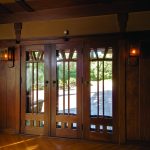We may receive a commission when you use our affiliate links. However, this does not impact our recommendations.
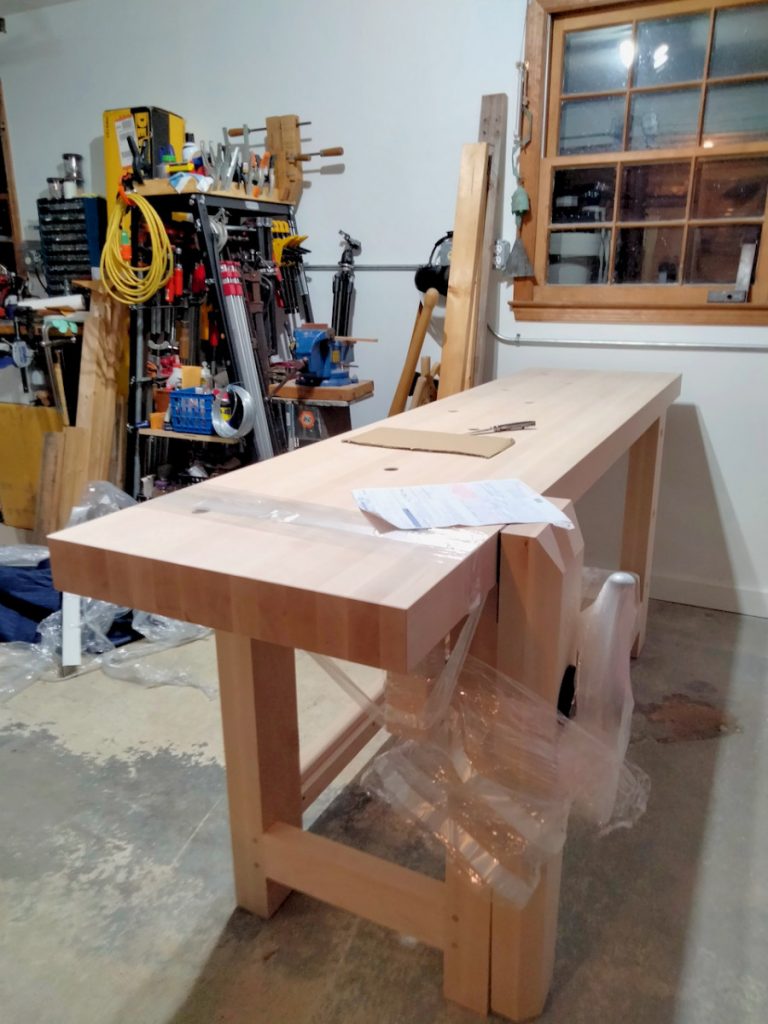
My new Benchcrafted Classic 84″ workbench.
Although I did not grow up in the United States (I came here in my 30s), the American holiday of Thanksgiving was not totally foreign to me. The notion that once a year we collectively reflect on the things that we have accomplished, the people who have helped us, the family members who were kind to us, our impermanent health, and not to mention the deity that many who celebrate the holiday put their trust in, made much sense for me. And while I have attended a few traditional Thanksgiving meals and have listened to people giving thanks – some reluctantly and others with in-depth convictions to the meaning of the word, no one in my orbit has ever given thanks for a tool or its creator. This story is my iteration of giving thanks to the most expensive tool that I have ever invested in (the Benchcrafted Classic Workbench) which arrived a few weeks before the holiday and has already made my woodworking experience so much better. But first, here are a few words on the other workbenches that served me during my career.
When I first dove into woodworking I only had a reclaimed door with an orange Pony hobbyist vise screwed into it as my makeshift bench. My first self-built proper workbench was composed of found hardwood pallet wood. One pallet that was obviously built to carry some heavy equipment provided me with hefty beams that I utilized for the bench’s base, while other random pallets provided me with short slats, that once processed and glued together, became the bench’s top. Sadly I had to leave this bench behind in Israel when I moved to the States.
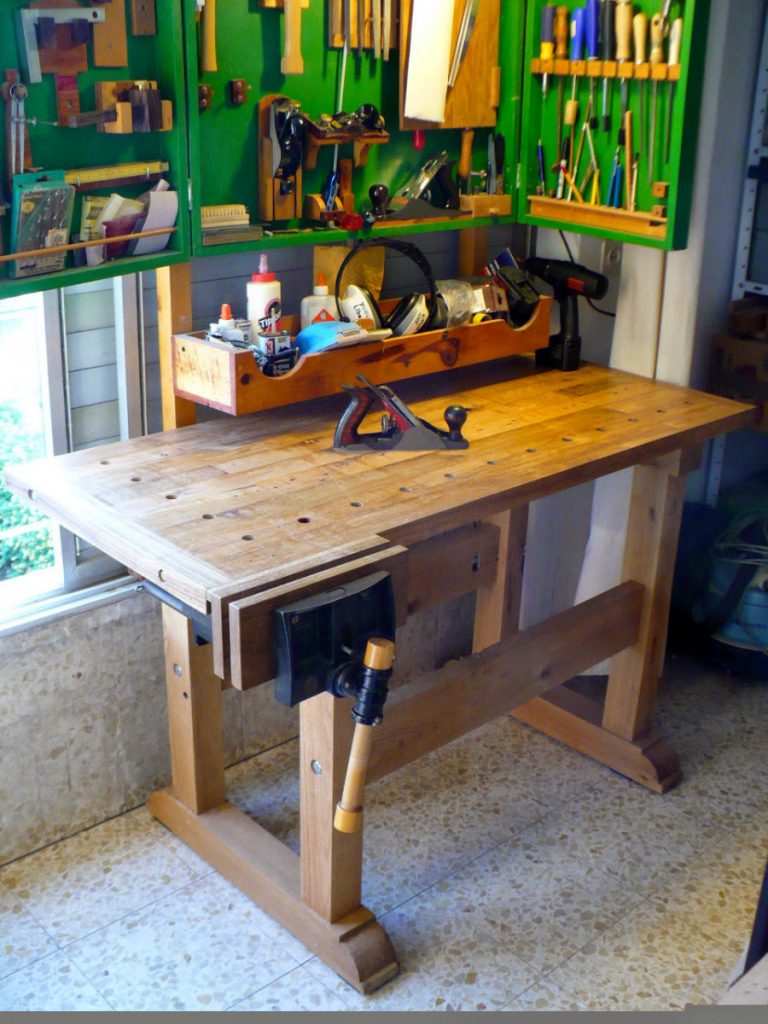
My first real bench standing on the balcony in my two-bedroom apartment in Israel.
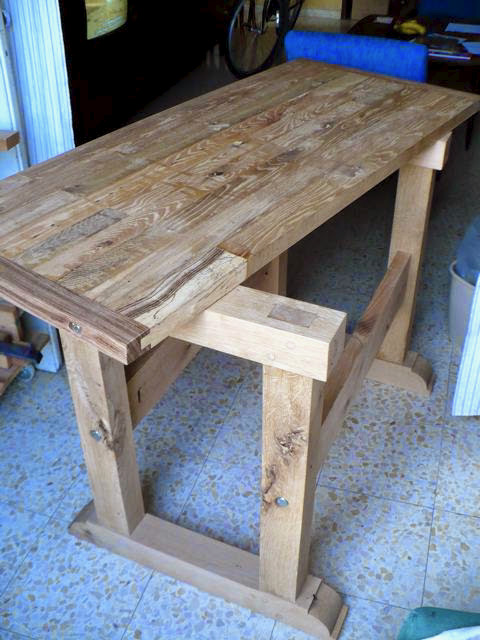
The top is a lamination of many short pieces of pallet wood that I found, processed, glued, and planed.
- The first proper bench that I built was made of hardwood that I salvaged from shipping pallets.
- The bench’s structure was made from white oak.
- I even included a bread board at the edges of the top to make it more stable. In hindsight this was not really necessary.
A few years later, after I arrived in the US, I built another bench from an abandoned bunk bed that I found on the side of the road. This bed, made of pine, metamorphosed into a blocky-looking bench with a lot of storage space tucked nicely underneath it. By the way, the metal cabinet under the top and the index card drawers were also street finds. After many years of good service, I gifted it to my friend and fellow woodworker Jack Mauch. It currently occupies some floor space at Jack’s home in New Hampshire.
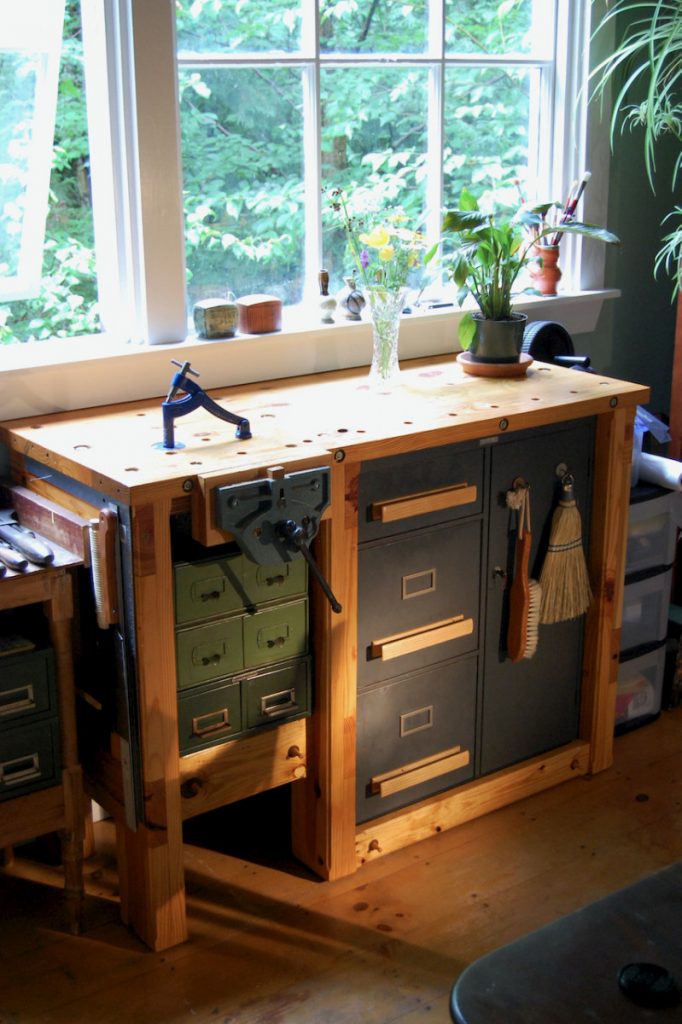
My first American bench.
When we moved from our apartment in New York City to our first house in Upstate New York I bought a fixed-height, all-purpose bench that has under-served me for a few years. It’s not that there is some profound issue with its design (it is actually quite smart) it is just that this bench is not substantial enough for vertical blows (chiseling) or lateral forces (hand planing).
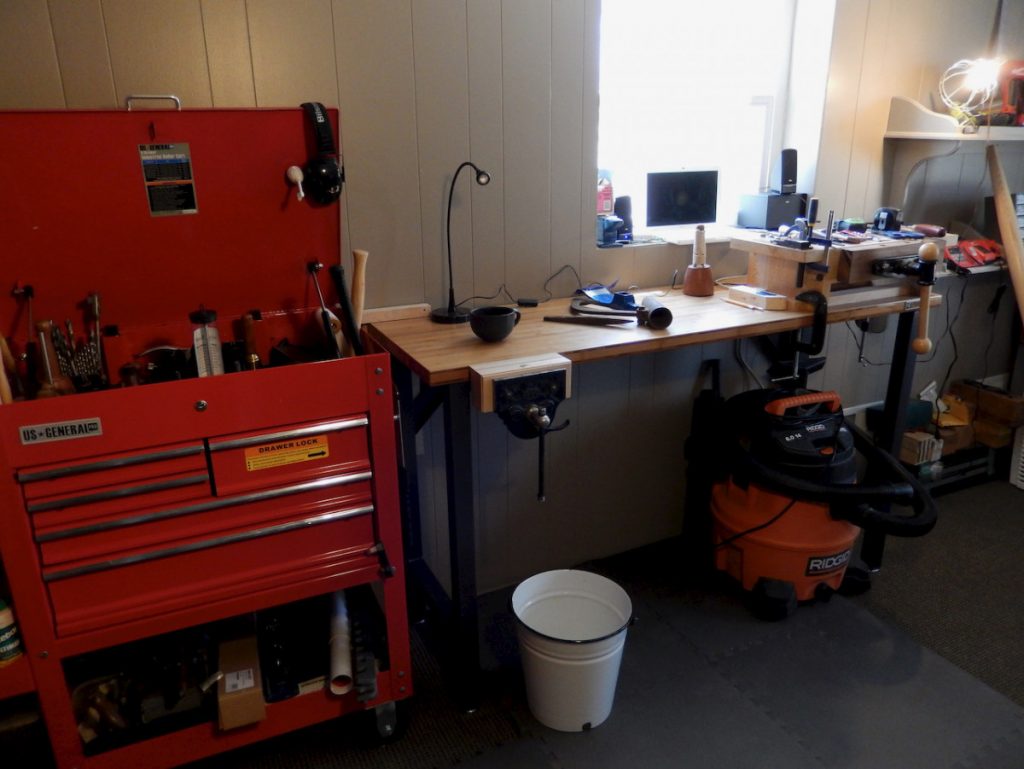
This was my third bench. I never imagined that it would be my main bench for so long.


I have tolerated it for years and found ways around its shortcomings, but I always knew that sooner or later I would have to make or buy a replacement for it, as a good workbench has to be endowed with two main attributes: mass and structure, which together render it with solidity and stability.
Ever since the reintroduction of the Roubo style of workbenches to our shops (we have to thank Christopher Schwarz for this), woodworkers have split into two camps, or even three, once we take into account Paul Sellers’s resurrection of the English bench. Devoted followers of the different factions passionately presented compelling arguments for the superiority of their bench’s style of choice and made the process of selecting the right bench much more complex than it used to be. Much has been written about these designs, and I would urge you to learn more about them if you are looking for a new bench. You can read books and plenty of articles, but if you are of the watchers’ persuasion I would recommend watching Chris Schwarz’s series of videos about his benches which can be found here.
So for a long time, I tirelessly debated which bench would serve me better – the predominant Central European style or perhaps this old/newcomer – the Roubo bench. Luckily for me, during one of my pilgrimages to the Lost Art Press shrine/shop in greater Cincinnati, I was able to give their many benches a try. I also consulted with my friend, Megan Fitzpatrick, who sang the praises of the Benchcrafted bench and vises. By now you might ask yourself, why the heck is he thinking of buying a bench – can’t he build the darned thing himself? The reason is simple – I didn’t have the time and I didn’t want to risk having a herniated disk – with an emphasis on the latter. You see, as you get older time becomes a precious commodity. I am not just talking about the fact that the time ahead of you is shorter by the day, I am talking about the fact that, at least in my case, the older I get the more I have to negotiate my time around family life, teaching, making, consulting, and writing. As for the risk of injury and the heaviness of the beasty bench, solid top benches of the Roubo variety are very heavy for a reason. But, even if you make them from segments of laminated stock you still have to lift them around for planing and sanding, etc, which was something I wanted to avoid.
Ok- so after I shared with you all this info and confided in you my reasoning for buying the bench, I hope you understand why I decided to buy the Benchcarfted 84” Classic with its sweet and smooth opening leg vise. This bench is so well designed, it is built like a rock, stable and rigid, includes a fantastic leg vise that opens and closes effortlessly, plus it arrives with a bonus – the monumental 1″ holdfast by Crucible tools. Though not cheap (it cost $2900 + ~$850 for shipping) it really, and for the first time in years, allowed me to plane boards without having the bench skid on me. The bench takes pounding as if it was a forged steel anvil and frankly just looks cool. I feel that myself and other woodworkers who own this bench (my friend Nancy Hiller is a proud owner too) are fortunate that someone like Jameel Abraham took this task of developing and overseeing the production of these benches which are superior to all the other commercial benches that I have had the chance of working on. And this is why on this Thanksgiving I am going to acknowledge my new bench and its creator as worthy of special thanks and gratitude.

The movers getting ready to bring the bench into my garage shop.
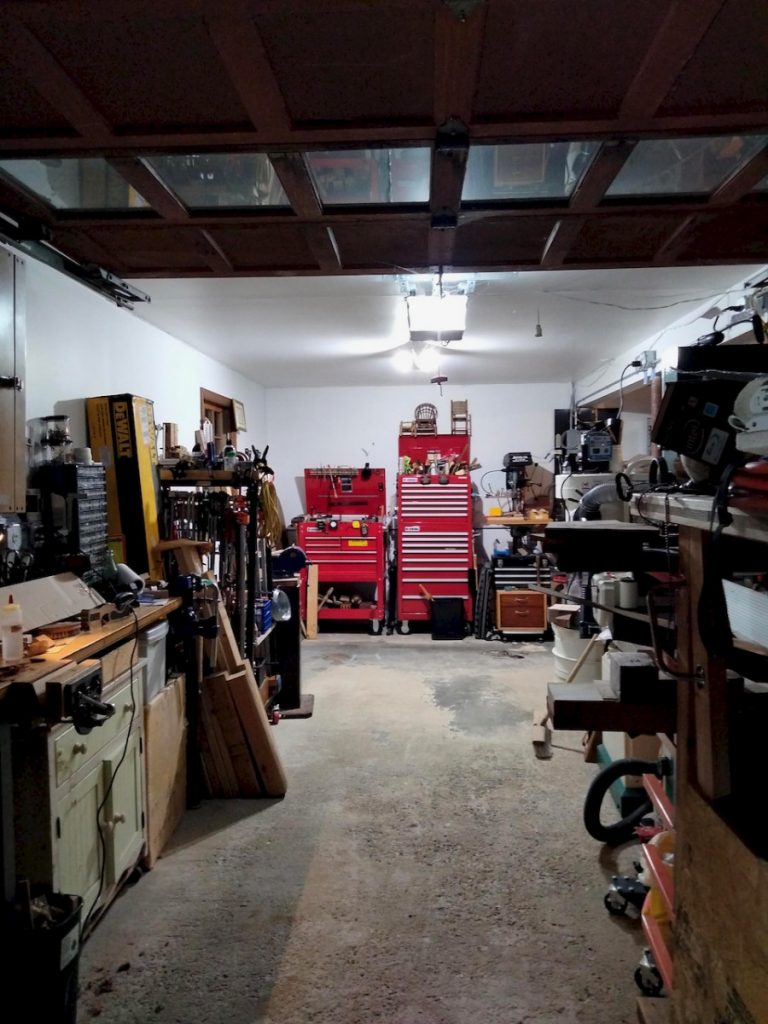
The space at the end of the car bay that I cleared for the bench.


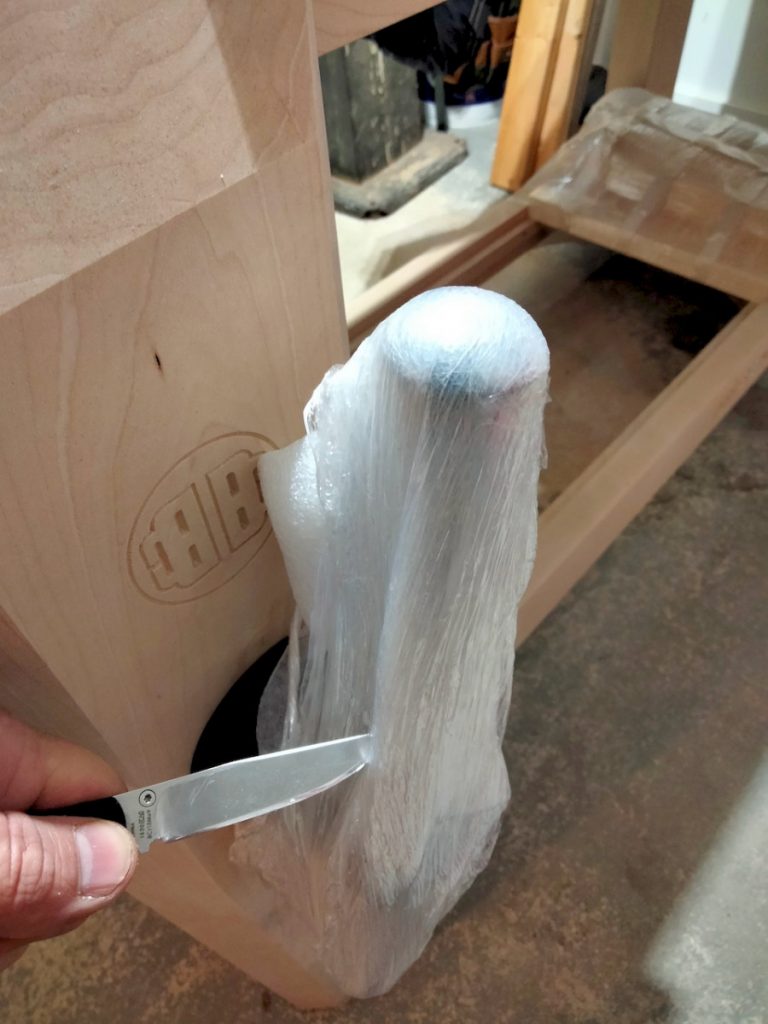
The bench has landed and the unwrapping begins.
Next time I will show some detailed images and talk about the bench’s initiation process.
Here are some supplies and tools we find essential in our everyday work around the shop. We may receive a commission from sales referred by our links; however, we have carefully selected these products for their usefulness and quality.











